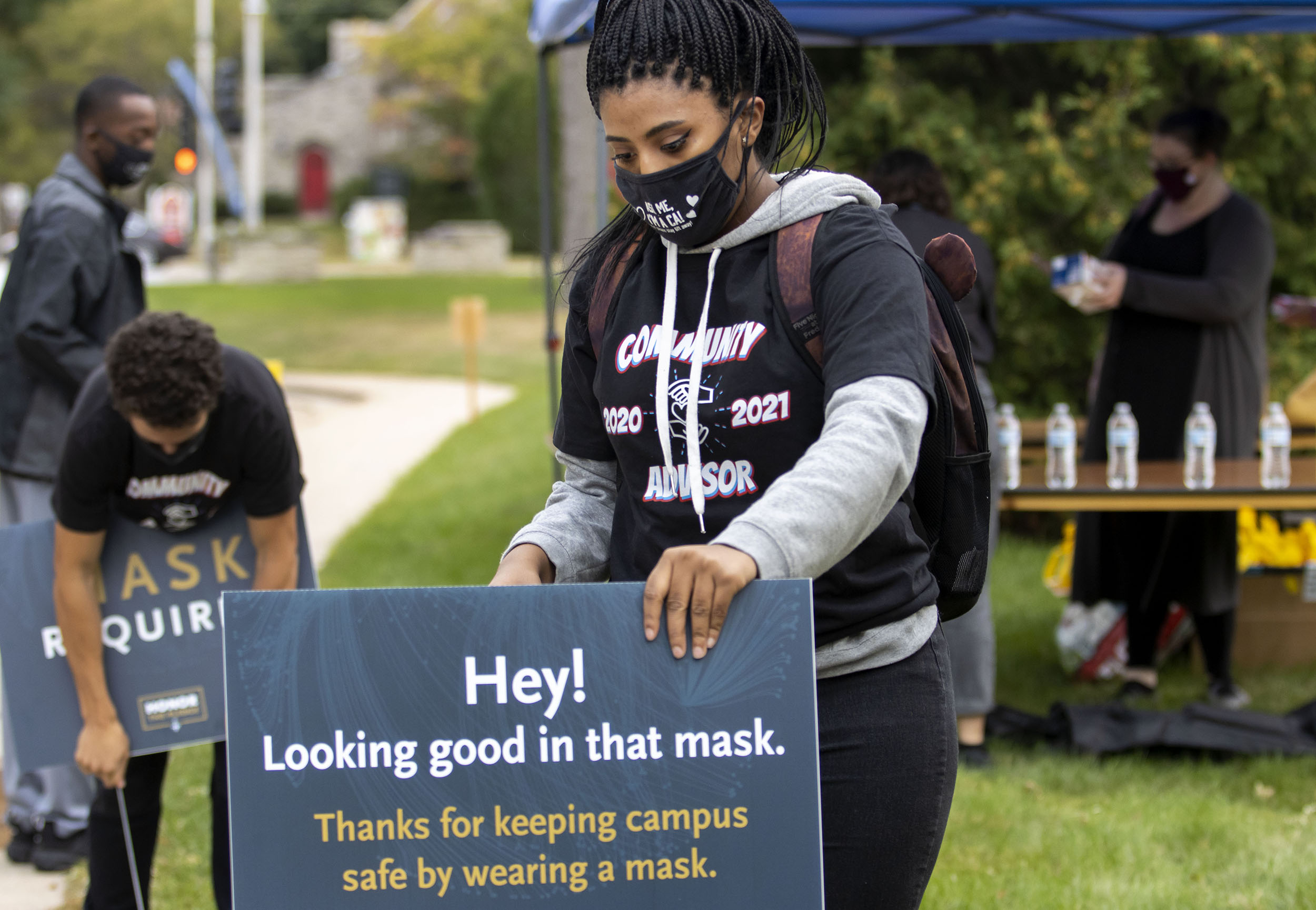More than academics are in order this fall semester as students return to college campuses across the country. The threat of a coronavirus spread is still present, so additional learning is in order for students attending educational institutions in Northeast Wisconsin. There’s a need to study COVID-19 protocols to protect students, faculty and staff.
These prevention initiatives come as the return to university life nationwide already has caused a spike in COVID-19 cases, forcing some schools to send students home. The mitigating measures may also calm any fears students might have. A new nationwide survey found nearly one-third of full-time college students are worried about their safety on campus, mainly due to their classmates’ inability to follow social distancing and other virus prevention guidelines. More than a third of survey respondents said they fear contracting the coronavirus while on campus.
So how do colleges keep from becoming super spreaders? Some officials give us answers.
Putting Protocols in Place
Be Safe Wisconsin partner Lawrence University, which begins class on Monday, expects to see nearly 60% of its students back on campus in Appleton. About 40% plan to attend class through virtual learning.
Strict safety protocols are in place for students on campus living in residence halls, themed group houses or houses for Greek organizations. “The rules for these different living arrangements are the same,” says Mark Burstein, President of Lawrence University. “We require all students to be masked and keep at least six feet distance in public spaces both in residential settings and other indoor locations on campus.”
He also notes, “A lower campus density means the majority of our dorm rooms will be singles this year.” Food will be provided to all students in a grab-and-go format. Still, frequent handwashing, daily symptom checking and other healthy habits are encouraged for all members of the campus community to inhibit the spread of the virus.
The university’s ventilation systems also have been upgraded with higher grade air filters and ultraviolet screens. Additionally, the school designated quarantine and isolation spaces in the event of an outbreak.
Learning to Live with COVID’s Threat on Campus
The Centers for Disease Control and Prevention (CDC) offers these campus-living tips.
- In dorm rooms, avoid sharing items with roommates or others. If you do, make sure to disinfect item.
- In shared bathrooms, avoid placing toothbrushes on counter surfaces. Use totes for personal items to limit contact with other surfaces in the bathroom.
- In dining halls and during mealtime, avoid sharing food, drink, utensils or other items with people. Pick up grab-and-go options for meals if offered. Avoid buffets and self-serve stations.
- In the laundry room, clean and disinfect surfaces others have touched such as buttons on the washing machine.
Testing & Tracing
Most universities across the country see COVID-19 testing and contact tracing as critical to preventing an outbreak on campus. Colleges in Wisconsin are no exception.
There will be initial testing and “surveillance testing,” which involves random tests to identify asymptomatic students and staff.
At Lawrence University, students have been asked to get tested before they arrive and to consider quarantine measures for 14 days before traveling. Faculty and staff also are required to take a test. “We will test all students and employees as soon as they arrive on to campus and then again 14 days after their first test,” Burstein explains.
But it doesn’t stop there. Burstein says the university will then test a random sample of the campus every week for the entire term. Lawrence University will rely on the Appleton Health Department for contact tracing, if an outbreak occurs.
With COVID-19 safety guidelines seemingly changing frequently for students and schools, Burstein says, “Be prepared for changes as the school year unfolds and students should not hesitate to ask questions about these protocols and guidelines. We are all learning, every day, how to live with this virus.”


